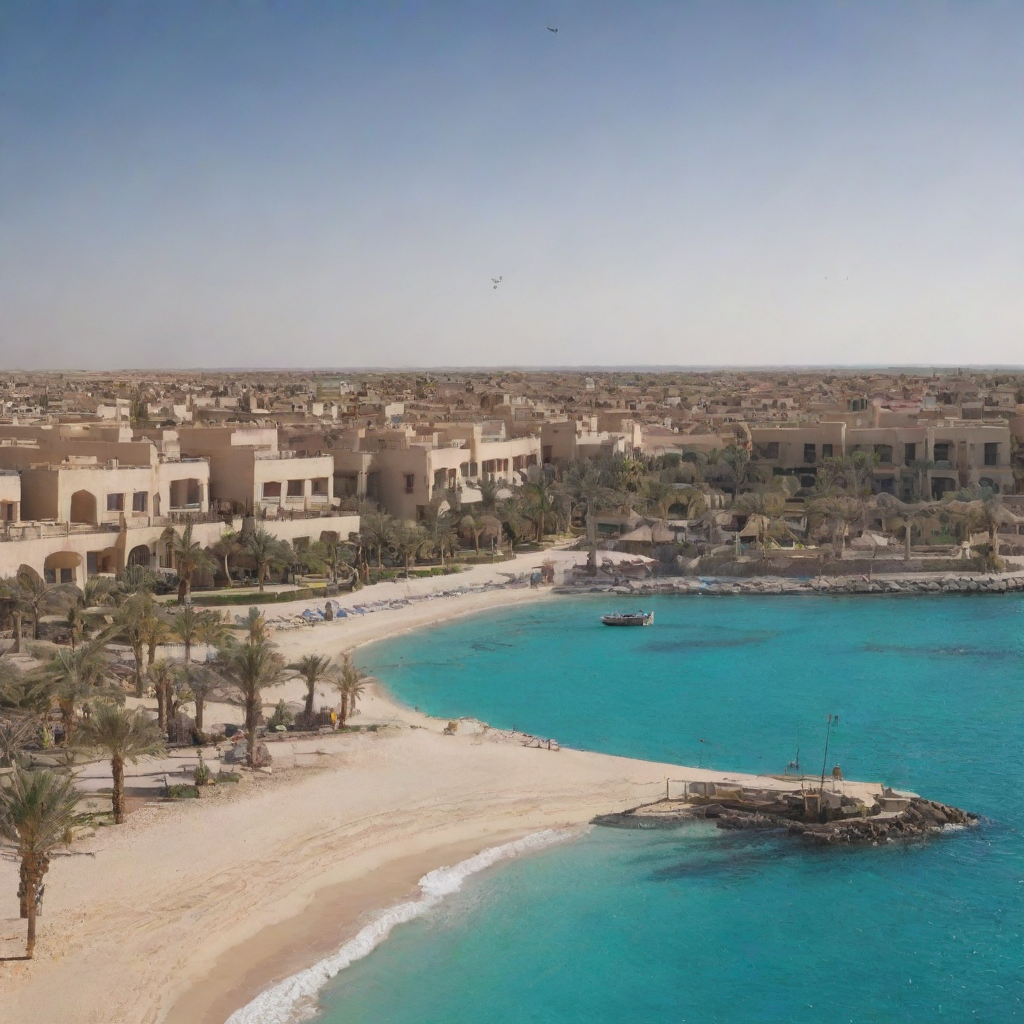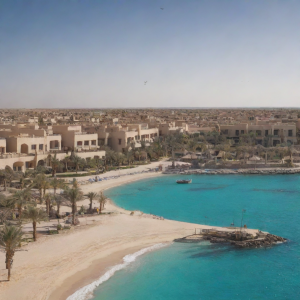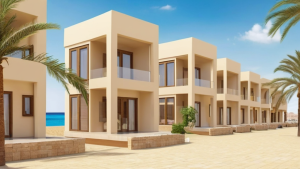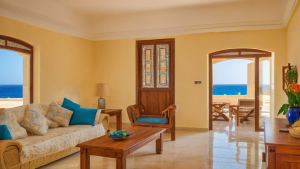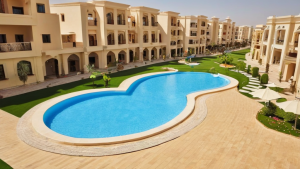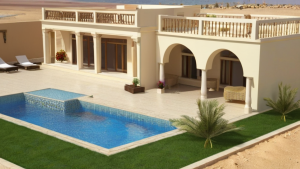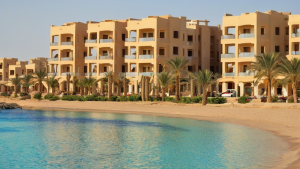Summary about owning and buying property in Hurghada, Egypt.
- Living near the Red Sea can be a remarkable experience, with stunning coastal views, vibrant marine life, and a rich cultural backdrop.
- Look out for local festivals, cultural fairs, and markets, where you can engage with the community and experience the local lifestyle without a heavy price tag.
- Since the Red Sea region can be warm, air conditioning might be necessary, but using it sparingly or investing in energy-efficient appliances can lower electricity bills.
- If you’re planning a longer stay near the Red Sea, having a source of income can help sustain your affordable lifestyle.
- If you prefer working locally, seek part-time or seasonal jobs in tourism or hospitality, which are prevalent industries in the Red Sea region.
Practical ways to live affordably near the red sea
Living near the Red Sea can be a remarkable experience, with stunning coastal views, vibrant marine life, and a rich cultural backdrop. However, the cost of living in this region can sometimes pose challenges for those looking to enjoy the area without overspending. Fortunately, there are many practical ways to live affordably near the Red Sea. By adopting smart strategies and making mindful choices, you can enjoy a comfortable lifestyle without stretching your budget.
Choose housing wisely
Housing costs often take up the biggest chunk of any budget. To live affordably near the Red Sea, focus on finding accommodation in less tourist-heavy towns or neighborhoods. Areas that are a bit inland or away from main tourist hubs tend to offer lower rents and property prices.
Consider shared living options or smaller, modestly sized apartments if you don’t require spacious accommodations. Many locals rent out rooms or smaller flats, which can significantly reduce monthly expenses. Additionally, long-term leasing arrangements often come with discounts compared to short-term leases.
Utilize local markets for food and essentials
Shopping at local markets rather than supermarkets can considerably lower your monthly spending. Near the Red Sea, there are many markets selling fresh produce, fish, and spices at affordable prices. Buying seasonal fruits and vegetables not only supports local farmers but also keeps your grocery bills in check.
Try to avoid imported goods, especially luxury or specialty items, which tend to be pricey. Cooking at home using fresh ingredients will save you a lot compared to dining out frequently.
Transportation savings
Transportation can add up quickly if you rely on taxis or rental cars. Opt for public transportation options such as minibusses or shared rides, common in Red Sea coastal towns. These alternatives are far more budget-friendly.
If you are comfortable, consider walking or cycling for short distances. Not only does this reduce transportation costs, but it also helps maintain good health and allows you to explore your surroundings more intimately.
Take advantage of free or low-cost entertainment
The natural beauty around the Red Sea offers plenty of inexpensive recreational opportunities. Beach days, snorkeling, and hiking can provide hours of enjoyment without costing a dime. Many coastal areas have public spaces and community events that are free or very affordable.
Look out for local festivals, cultural fairs, and markets, where you can engage with the community and experience the local lifestyle without a heavy price tag.
Be mindful of utility usage
Utilities such as electricity, water, and internet can inflate monthly expenses if not managed carefully. Since the Red Sea region can be warm, air conditioning might be necessary, but using it sparingly or investing in energy-efficient appliances can lower electricity bills.
Water conservation is also important, especially in areas where water resources are limited. Simple habits like turning off taps when not in use and using water-saving technology can reduce your utility costs.
Connect with the local community
Building strong relationships with locals can provide both social and practical benefits. Locals often know the best affordable spots for food, shopping, and services. Engaging with community initiatives or co-ops may offer opportunities for shared resources and communal living options, which reduce individual costs.
Additionally, learning some of the local language and customs can make day-to-day transactions smoother and more cost-effective, avoiding misunderstandings and inflation of prices due to tourist rates.
Work remotely or find local employment
If you’re planning a longer stay near the Red Sea, having a source of income can help sustain your affordable lifestyle. Remote work opportunities are increasingly common and allow you to earn in stronger currencies while spending locally.
If you prefer working locally, seek part-time or seasonal jobs in tourism or hospitality, which are prevalent industries in the Red Sea region. These can supplement income and help you integrate within the community.
Smart financial planning
Maintaining a budget tailored to living near the Red Sea is essential. Track your expenses carefully, comparing costs between different areas and services. Prioritize spending on necessities and limit impulsive purchases that can add up over time.
Look out for discounts, deals, and loyalty programs offered by local businesses. Planning your major expenses, such as travel or appliance purchases, during off-peak seasons can also yield savings.
Practical living tips
- Opt for energy-efficient lighting and appliances to reduce electricity bills.
- Use natural ventilation whenever possible instead of air conditioning.
- Grow your own herbs or small vegetables in pots or a small garden.
- Share resources with neighbors, like internet plans or transportation.
- Use cash instead of credit cards to manage expenses realistically.
Living affordably near the Red Sea requires a combination of thoughtful planning, embracing local culture, and making sustainable choices. By prioritizing practical decisions on housing, food, transport, and entertainment, you can enjoy the unique coastal lifestyle without overspending. This approach not only benefits your pocket but also enriches your experience by encouraging deeper connections with the environment and community around you.
Exploring local culture and cost-saving opportunities in red sea communities
Embracing the rich traditions of red sea communities
The coastal areas surrounding the Red Sea are bursting with vibrant cultures, shaped by centuries of trade, migration, and history. To live affordably in this region, immersing yourself in the local way of life is a key approach. When you truly connect with the traditions, values, and daily routines of the residents, you not only save on costs but also gain a rewarding experience that money alone cannot buy.
Start by exploring local markets where artisans and farmers sell their goods directly. By purchasing fresh produce, handmade crafts, and traditional foods from community vendors, you avoid inflated prices common in tourist zones. These markets are often hubs of social activity and cultural exchange, where you can learn about the stories behind the products and develop relationships that lead to better deals and insider tips.
Sourcing affordable housing through local networks
Housing expenses are typically a major cost in any location close to the Red Sea. However, tapping into local networks and understanding community dynamics can present affordable living options. Many families rent parts of their homes or offer rooms at reasonable rates to newcomers interested in integrating with the neighborhood.
Platforms that connect you with locals or community bulletin boards found in cafes and mosques can be gold mines for finding budget-friendly accommodation. Avoiding international rental agencies or overly commercialized listings helps you secure a home that suits your budget without compromising proximity to amenities or the sea.
Utilizing traditional transportation for cost savings
While taxis and car rentals are common modes of transportation, they can add up quickly and strain your finances. To live affordably, consider using shared transportation systems that locals rely on, such as minibusses and ferries. These options are widely used across Red Sea towns and offer affordable, reliable ways to travel between neighborhoods and to nearby cities.
Walking and cycling are also practical and healthy alternatives, especially within compact towns and villages. This reduces fuel costs and allows you to explore your surroundings up close, uncovering hidden gems like local cafes and community parks.
Participating in community events and festivals
The Red Sea region boasts a lively calendar of community festivals and cultural events that often come at little to no cost. Attending these gatherings not only deepens your understanding of local customs but also opens doors for socializing with residents who can provide invaluable insider knowledge on affordable goods and services.
Many events feature live performances, traditional food, and artisan markets where you can enjoy authentic experiences without the premium prices of tourist attractions. Engaging in these activities fosters a sense of belonging, which can make day-to-day life more fulfilling and cost-effective.
Shopping and eating like a local
One of the most effective ways to reduce your cost of living near the Red Sea is adapting your shopping and dining habits to those of the locals. Instead of frequenting international supermarkets or upscale restaurants, opt for local grocery stores and street food vendors where prices are significantly lower.
Local cuisine is rich in flavors and typically prepared using locally grown ingredients, which keeps costs down. Dishes like fresh grilled fish, spiced lentils, and flatbreads offer nutritious options that are wallet-friendly. Learning simple recipes from neighbors or through community classes can help you recreate these meals at home, avoiding pricey takeouts and packaged foods.
Maximizing community resources and shared services
Communities along the Red Sea often share resources in ways that make living more affordable. From communal gardens to cooperative buying groups and shared childcare, engaging with these services reduces individual expenses and strengthens social ties.
Joining local groups or neighborhood associations keeps you informed about these opportunities. Shared resources help cut down costs for essentials like water, electricity, and household needs, and they promote sustainable living practices that benefit the environment and your budget long term.
Learning local languages and customs
Understanding and speaking the predominant languages, such as Arabic or specific dialects native to Red Sea communities, significantly enhance your ability to live affordably. Language proficiency allows you to negotiate better prices, comprehend local laws, and access services that might be unavailable to outsiders.
Moreover, being respectful and knowledgeable about local customs fosters goodwill, which can lead to discounts, free advice, or invitations to partake in communal resources. Small efforts to learn greeting phrases, gestures, and etiquette go a long way in building trust and rapport.
Engaging in local work and volunteering opportunities
Engagement with the local economy through part-time work, apprenticeships, or volunteering can provide additional savings and support. Many community projects and businesses value the help of newcomers and, in exchange, offer food, lodging, or learning experiences.
These arrangements reduce direct expenditures and enrich your stay, giving you hands-on insights into traditional crafts, fishing, farming, or hospitality industries. This blend of involvement and affordability makes your residence near the Red Sea more sustainable and satisfying.
Living affordably near the Red Sea goes beyond mere budgeting; it involves embracing the local culture and community deeply. By integrating into everyday life through local markets, shared services, traditional transportation, and cultural participation, you can lower your expenses while gaining rich experiences. With effort and openness to local ways, affordable coastal living along the Red Sea becomes both possible and rewarding.
Living affordably near the Red Sea is entirely possible when you combine practical strategies with a genuine appreciation for the local culture. By choosing cost-effective housing, utilizing public transportation, and shopping at local markets, you can significantly reduce your living expenses without sacrificing the quality of life. Embracing the unique traditions and lifestyle of Red Sea communities not only enriches your experience but also opens doors to many cost-saving opportunities, like community events and locally sourced products.
Exploring the rich cultural heritage and building connections with local residents can help you discover hidden gems and affordable options that tourists often miss. Whether it’s preparing meals with fresh, local ingredients or taking part in community activities that are free or low-cost, engaging with the people and customs around you makes living near the Red Sea both enjoyable and budget-friendly.
By approaching life near the Red Sea with an open mind and smart spending habits, you create a balanced lifestyle where your money goes further, and your experience grows richer. Affordable living doesn’t mean missing out,it means finding value in everyday moments and making the most of the beautiful surroundings and vibrant communities that the Red Sea region offers.

